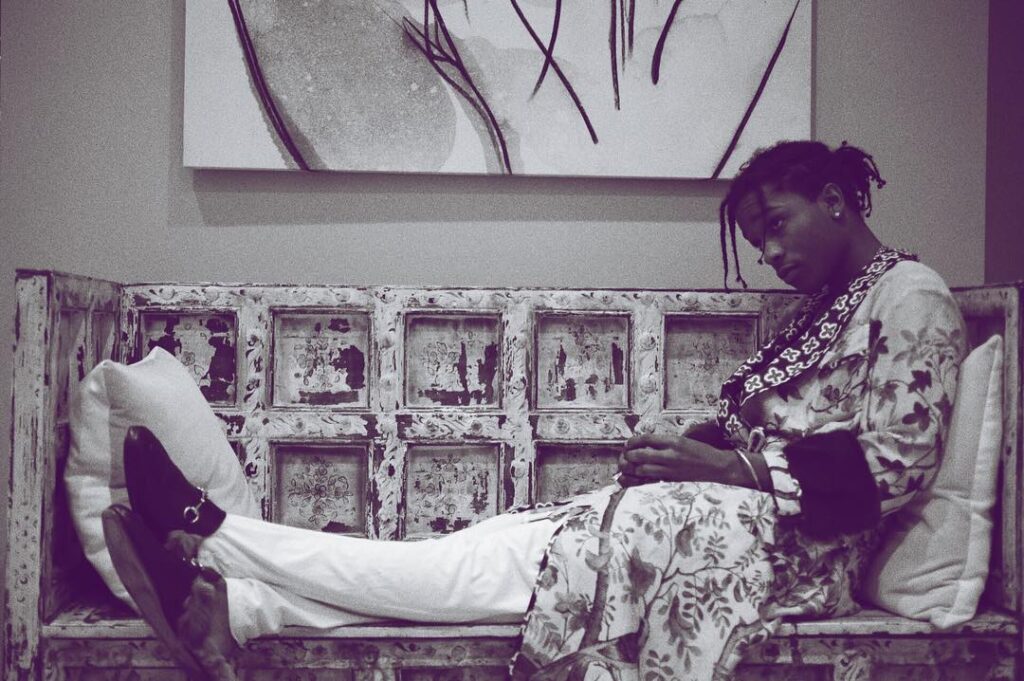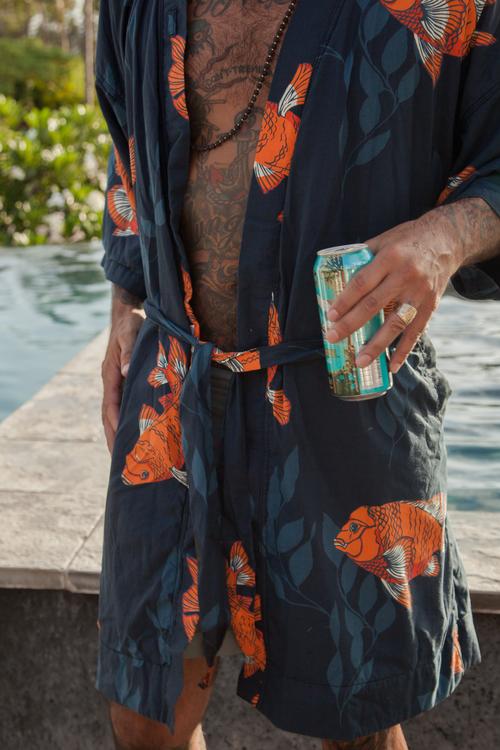A Case for Wearing Robes, in Public and Private

Gandalf, Obi Wan Kenobi, and The Dude. Two commonalities thread these three legendary fictional characters together: wisdom and robes. Both defining characteristics come from the monkish influences that inspired all three characters. Monks, of both Eastern and Western religions, choose robes for their modest simplicity. They are often solid colored, whether brown in the Christian tradition or orange in the Buddhist tradition, and disregard any form of fashion. The wisdom characteristic, while more of a literary trope, certainly carries some weight. Robes bestow an assumed wisdom upon their wearer. The case made here is that this assumed wisdom holds up whether the robe is orange cotton or a fabulous Gucci concoction.
Robes have a long history in Europe, going back to the Greco-Roman togas, but for the history of robes in contemporary fashion, you have to look to the East. European fabrics of the middle ages were boring, drab, heavy, and uncomfortable. The Silk Road allowed Asian goods to trickle into Europe for centuries but it wasn’t until sea trade opened up between Europe and Asia in the fourteenth century that Asian fabrics made their way into European fashion. Chinese, Japanese, and Indian fashion featured ornate patterns and bright colors that fascinated medieval Europeans. These garments also came in much lighter and softer fabrics like cotton, linen, and silk.
The robe as we know it in western fashion began in Northern Italy during the Renaissance. Fantastically wealthy merchants began to flaunt their wealth by wearing oriental fabrics. They tailored these fabrics into European approximations of Japanese and Chinese garments that resembled robes. This new fashion trend came to represent wealth and power. As trade expanded over the following centuries these fabrics became more abundant and cheaper. By the nineteenth century ornate robes became a middle class extravagance. That is where we still find them today.
Some extravagances though, are defendable under the right circumstances. With proper stylistic inflection, robes can work in social settings. It’s all about finding the robe that work best for your personal style and confidence level. The Japanese yukata is an excellent place to start when approaching Robe Life for the first time. A yukata is essentially a summer weight kimono. They are traditionally made from cotton or other lightweight fabrics and feature a short sleeve that drops just below the elbow. When styling a yukata, think of it as a substitute for a short sleeve button down or Hawaiian shirt. California Cowboy offers an Americanized take on the yukata. Their version has a terry cloth lining, sunglass loop on the lapel, and a third pocket on the back hip designed to hold a bottle. They come in several fun patterns, akin to Hawaiian shirts (another Japanese inspired garment), and are ideal for summer parties. If you want a proper Japanese yukata, check out the Kimono Yukata Market to get one made in Japan to traditional specs.

